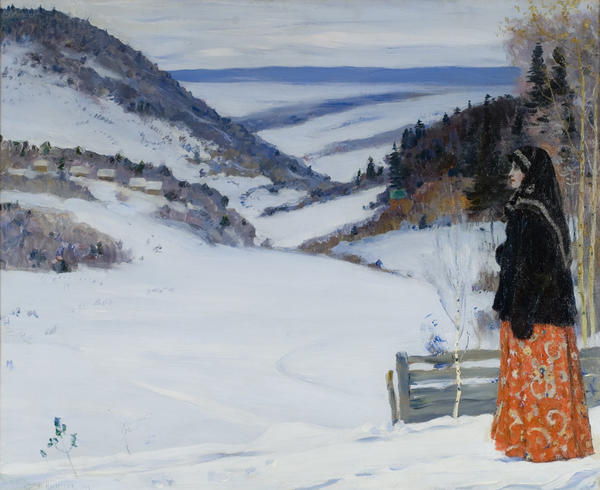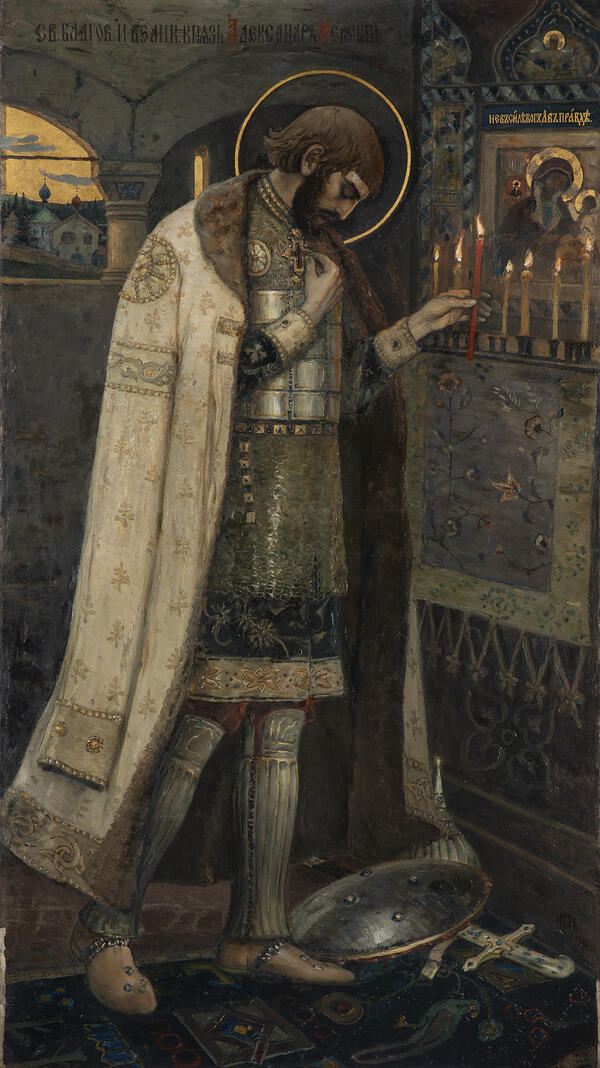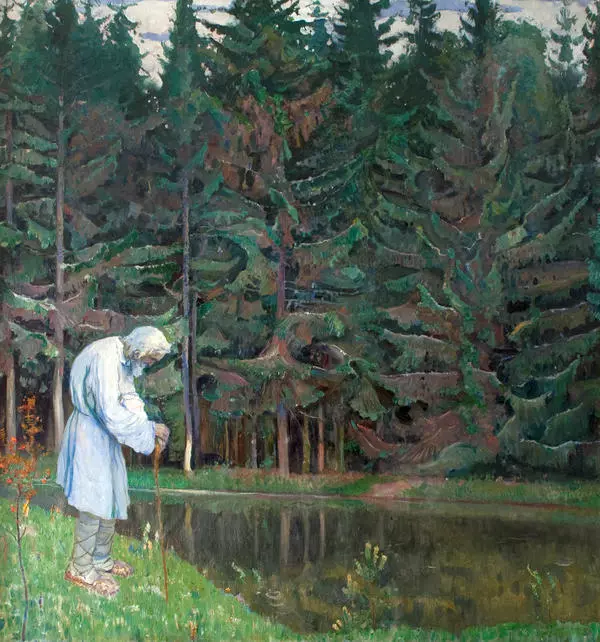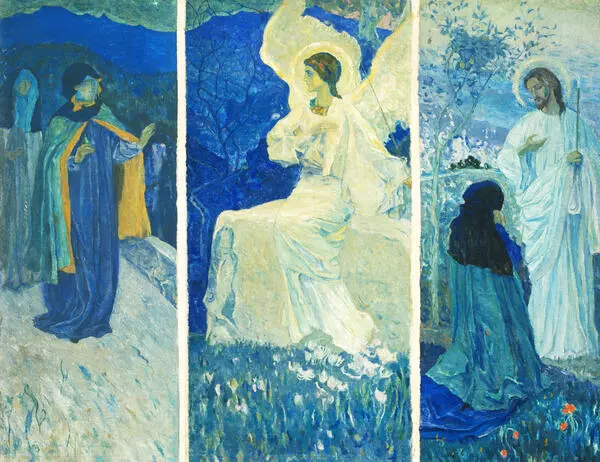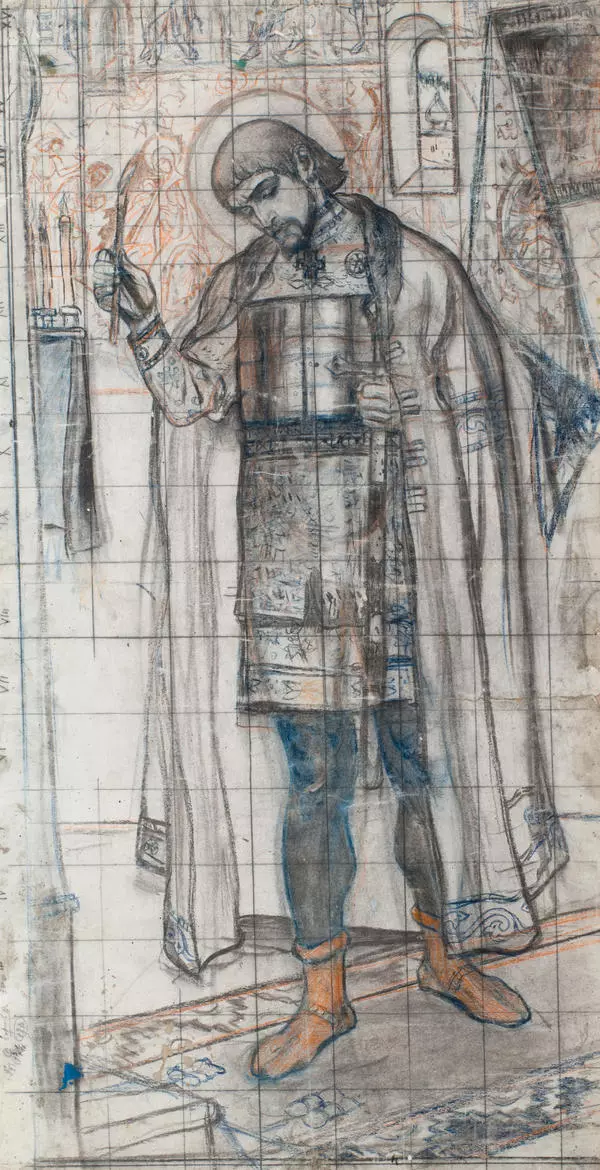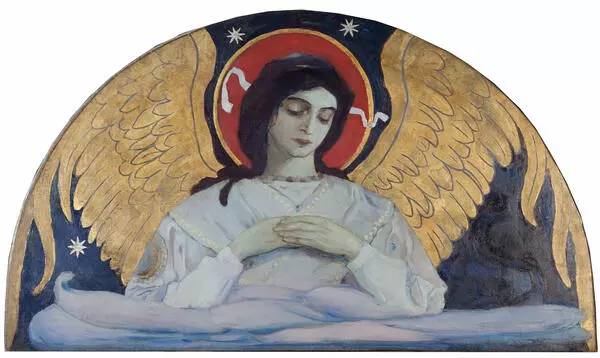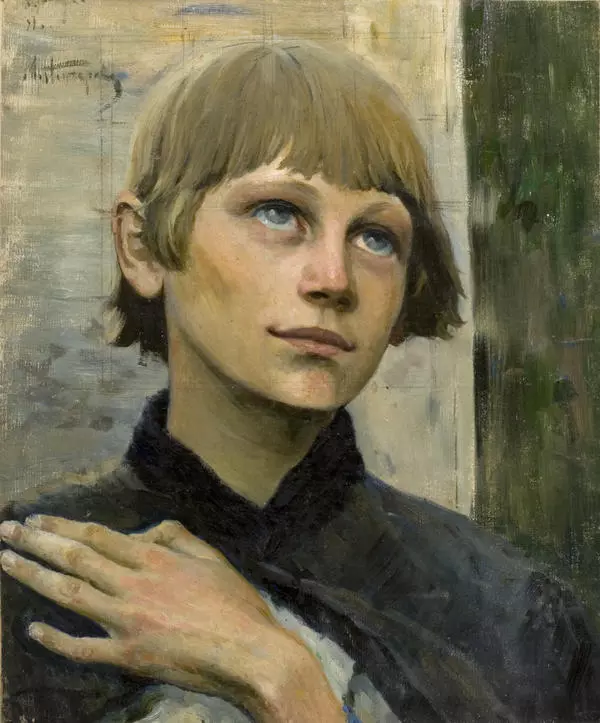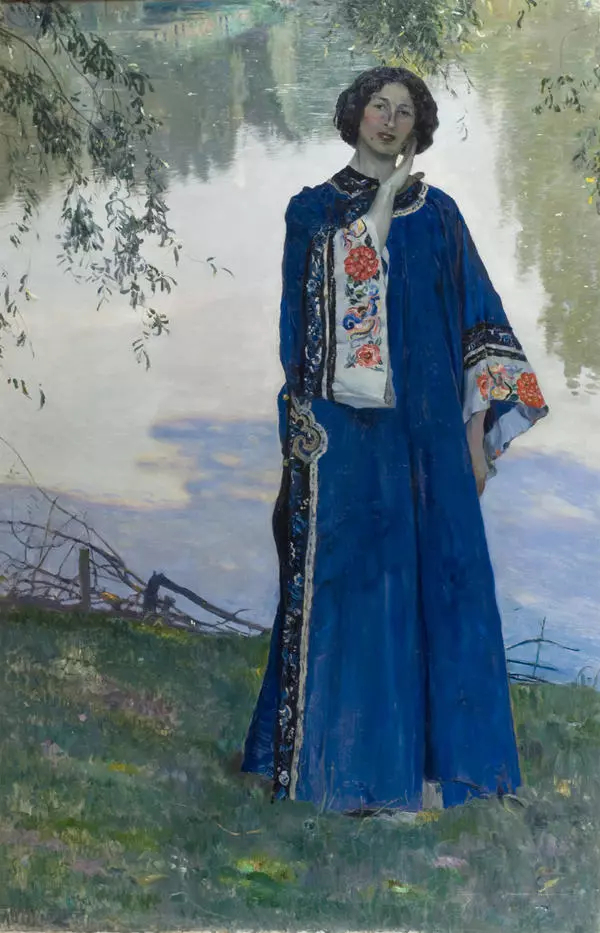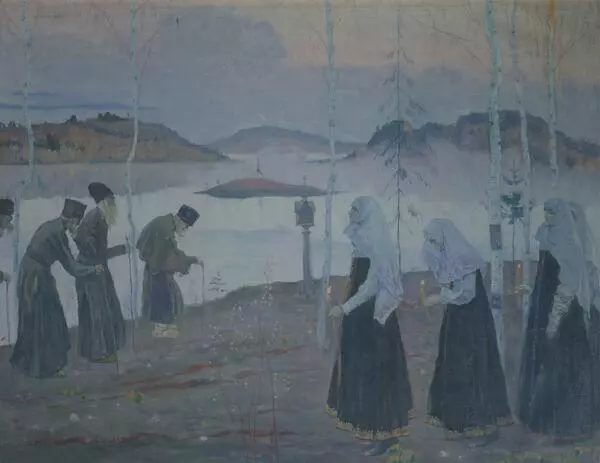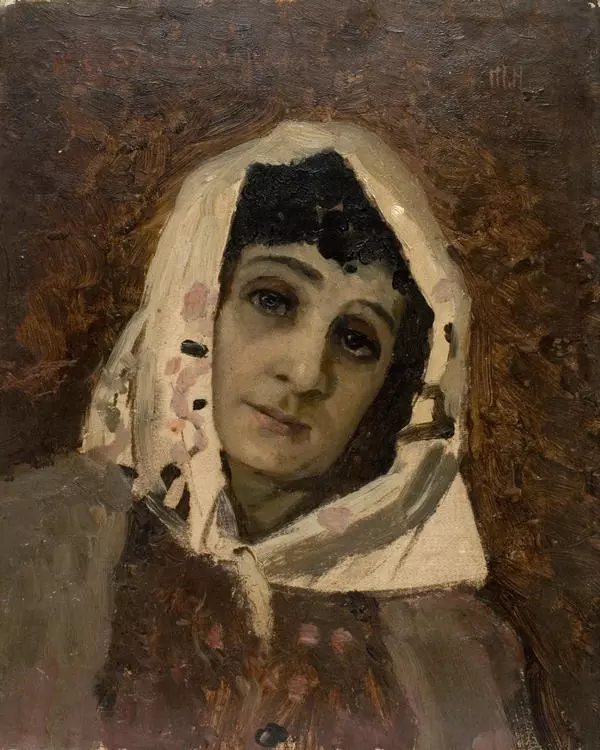The early 20th century was a difficult period in the life and art of Mikhail Nesterov. The country was in the grip of the first revolution, while the artist was searching for topics to provide him with new inspiration. At that time he departed from religious subjects and found support in creating soulful images of women.
Back in 1887, impressed by novels In the Woods and On the Hills by the classic of Russian literature Pavel Ivanovich Melnikov-Pechersky, the artist started working on the cycle of illustrations to his novels. Nesterov called his paintings ‘a painted novel’. He devoted a series of paintings to the sorrowful fates of Melnikov-Pechersky’s female characters, their search for a better and happier life.
The first painting in this genre was A Bride of Christ created in 1887, followed by For the Love Potion and the Great Taking of the Veil, that Nesterov devoted to the search for spiritual ideal. Then he created a number of paintings with female characters searching for mutual love and personal happiness.
Winter in Skit is devoted to Flenushka, a character from a novel by Melnikov-Pechersky, a modest and pure young girl suffering from the lack of love and happy family life, who did not find sanctuary and peace even in a convent. The painting is permeated with the feeling of desperate woe, the despair and loneliness of the young woman are emphasized by dull snowy landscape, barely seen log cabins of the small convent and thin white birch trees. At the same time, the painting is permeated with Nesterov’s favorite theme of harmony of man and nature, the message of the dramatic composition of the plot.
The artist elicits strong emotional response from the viewer using contrasts. The bright red and black dress of the woman stands out against the background of cool silvery-bluish colors of the landscape. The character evokes compassion: a young and beautiful woman, deserving happiness and love, is forever confined to live in the woods in severe conditions of Old Believers small and secluded convent, completely out of touch with the world.
In the Winter in Skit Nesterov created one of the most dramatic and sad female images in the Russian painting of the early 20th century. The model for the painting was the artist’s second wife Ekaterina, who became not only the guardian of the heart and assistant in his work, but also his muse. In the forty years of their marriage the artist painted multiple portraits of his wife.
Back in 1887, impressed by novels In the Woods and On the Hills by the classic of Russian literature Pavel Ivanovich Melnikov-Pechersky, the artist started working on the cycle of illustrations to his novels. Nesterov called his paintings ‘a painted novel’. He devoted a series of paintings to the sorrowful fates of Melnikov-Pechersky’s female characters, their search for a better and happier life.
The first painting in this genre was A Bride of Christ created in 1887, followed by For the Love Potion and the Great Taking of the Veil, that Nesterov devoted to the search for spiritual ideal. Then he created a number of paintings with female characters searching for mutual love and personal happiness.
Winter in Skit is devoted to Flenushka, a character from a novel by Melnikov-Pechersky, a modest and pure young girl suffering from the lack of love and happy family life, who did not find sanctuary and peace even in a convent. The painting is permeated with the feeling of desperate woe, the despair and loneliness of the young woman are emphasized by dull snowy landscape, barely seen log cabins of the small convent and thin white birch trees. At the same time, the painting is permeated with Nesterov’s favorite theme of harmony of man and nature, the message of the dramatic composition of the plot.
The artist elicits strong emotional response from the viewer using contrasts. The bright red and black dress of the woman stands out against the background of cool silvery-bluish colors of the landscape. The character evokes compassion: a young and beautiful woman, deserving happiness and love, is forever confined to live in the woods in severe conditions of Old Believers small and secluded convent, completely out of touch with the world.
In the Winter in Skit Nesterov created one of the most dramatic and sad female images in the Russian painting of the early 20th century. The model for the painting was the artist’s second wife Ekaterina, who became not only the guardian of the heart and assistant in his work, but also his muse. In the forty years of their marriage the artist painted multiple portraits of his wife.

